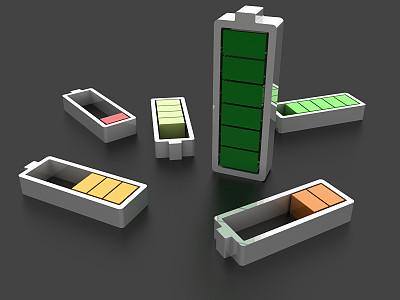Max Temperature For Lithium-Ion Battery- Temperature Range And Effect
Mar 05, 2020 Pageview:2437
Since the time the electronic manufacturers launched the Lithium-Ion batteries in their phones, there have been a lot of discussions going around. Whether it is about maximum temperature about batteries, or the effect of different temperature levels in the battery, it is important to know the temperature range and effects of a lithium-ion battery. You must have the curiosity to know about how lithium batteries work in different weather conditions.
This article will discuss the highest temperature of lithium-ion, and how temperature affects Lib, the freezing point of the lithium batteries. By following all the instructions, you can use your battery within different temperature conditions.
How hot can a lithium-ion battery get?
Are you eager to know how much temperature a lithium-ion battery can resist? Not only because of the summer season, but it is also because of the processing power of the CPU, which makes the battery generate a lot of heat. Every battery has the highest temperature and lowest temperature.
You call it a melting point and freezing point. You must have seen in most of the Samsung phones; there comes a reminder for flash when you use your phone during high temperature. This is to maintain the balance of the phone as well as the battery.
It is said that most lithium-ion batteries must not be charged above 45°C or discharged above 60°C. If the cell temperature gets too high, then venting may occur, resulting in battery failure or even cell fire. New lithium battery sciences like lithium iron phosphate (LiFePO4) guarantee to increment both charges and release max temperatures. However, there will consistently be a genuinely low furthest cutoff.
The waste warmth vitality that causes the temperature to ascend in lithium-science batteries originates from a few sources. During both charge and release, electronic circuit components situated around the battery may lead to heat into the phones.
This is particularly valid for chargers since they're generally an exchanging power supply with a controller that actualizes the CC/CV calculation required for the ideal charge of lithium-science cells.
Does temperature affect lithium-ion batteries?
The vast majority of the temperature impacts are identified with chemical responses happening in the batteries and materials utilized in the batteries. The connection between the rate of chemical reactions and response temperature follows Arrhenius's condition, and temperature variety can prompt the difference in electrochemical response rate in batteries.
Other than chemical responses, the ionic conductivities of terminals and electrolytes are likewise influenced by temperature. For instance, the ionic conductivity of lithium salt based electrolytes diminishes at low temperatures.
Low-temperature effects –
With the perplexing material system utilized in LIBs, the performance degradation at low temperatures can be attributed to a few unique sources. In the first place, the low temperature will influence the property of the electrolyte.
With the reduction of temperature, the thickness of the electrolyte will expand, which will decrease the ionic conductivity. The inward obstruction will along these lines ascend because of the expansion in the impedance of the directional movement of compound particles.
The charge-transfer resistance significantly increases when the temperature decreases
The charge-transfer resistance of a discharged battery is typically much higher than that of a charged one
The expansion of charge transfer in LIBs is likewise a significant factor that adds to the performance degradation at low temperatures.
High temperature – The impacts at high temperatures are significantly more complex than those at low temperatures. During the activity of the LIBs, heat is produced inside the batteries.
Heat generation - The heats generation inside the LIBs at typical temperature is related to charge transfer and chemical responses during charging and discharging. It has reversible as well as an irreversible process that generates heat.
Aging - Aging is an impact during the use of LIBs at high temperatures. Aging not only influences the performance of LIBs, yet additionally lessens their lifetime. Cycle aging and calendar aging, these both occur as the combination in the working process of Lithium-ion batteries.
Thermal Runaway – it may happen when the batteries are manufactured deficiently or dealt with inappropriately. Thermal runaway frequently happens in high-temperature states, in which the high temperature triggers the exothermic responses in the working batteries. These responses discharge more heat, and thus further advance the expansion of temperature inside the battery.
At the point when such uncontrolled heat generation exceeds the heat endurance of the batteries, fire and investigation would happen.
What temperature do lithium-ion batteries freeze?
Li particle can be quickly charged from 5°C to 45°C (41 to 113°F). Underneath 5°C, the charge current ought to be decreased, and no charging is allowed at freezing temperatures in light of the diminished diffusion rates on the anode. During the charge of the battery, the internal cell resistance causes a slight temperature rise that makes up for a portion of the cold. The internal resistance of all batteries gets increases in the cold.
Numerous battery clients are unconscious that consumer-grade lithium-ion batteries can't be charged beneath 0°C (32°F). Even though the pack has all the earmarks of being charging ordinarily, the plating of metallic lithium can happen on the anode during a sub-freezing charge.
This is lasting and can't be expelled with cycling. Batteries with lithium plating are increasingly powerless against failure whenever presented to vibration or other stressful conditions. Advanced chargers (Cadex) prevent charging Li-particle beneath freezing.
Advancements are being made to charge Li-particle below frozen temperatures. Charging is for sure conceivable of most lithium-particle cells, however, just at low currents. As indicated by investigating papers, the reasonable charge rate at – 30°C (– 22°F) is 0.02C.
At the time of low current, the charge would stretch to more than 50 hours, a period that is esteemed unfeasible. There are, in any case, claim to fame Li-particles that can run after to – 10°C (14°F) at a diminished rate.
Conclusion
The factors discussed above concentrates on the melting and freezing conditions of lithium-ion batteries. If you know about the maximum and minimum temperature of lithium-ion batteries, you will be able to keep your batteries safe in any environment.
- Prev Article: Lipo Batteries For Model Aircraft Capacity And Charging
- Next Article: How do you charge a lithium motorcycle battery?
Leave Message
Hottest Categories
-
Hottest Industry News
-
Latest Industry News












